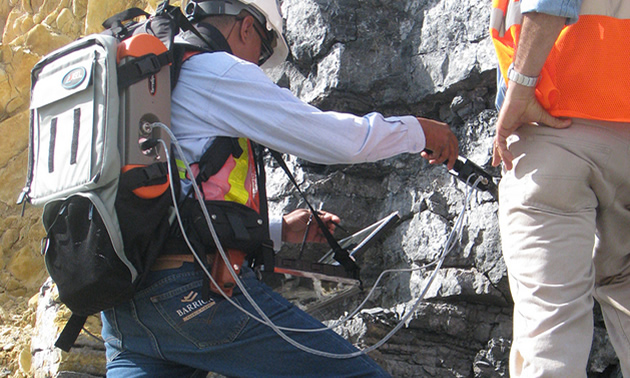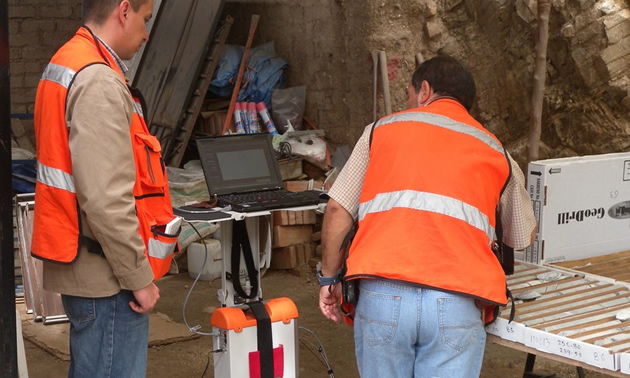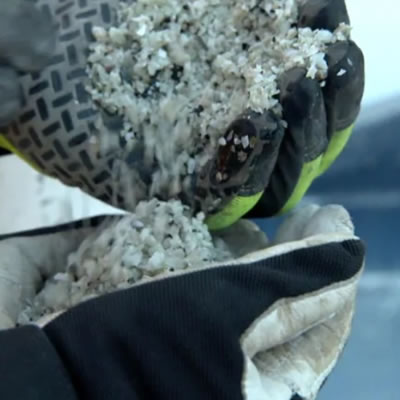Near-infrared technology essential for rapid and accurate mineral sampling
All stages of mine development benefit from this updated technology
In the search for ever more complex ore deposits, it has become more important to continually fine tune the extraction process. Detailed knowledge of the characteristics of the ore, delivered in record time, is the aim of mineral analyzers that use near-infrared spectroscopy technology to optimize mining operations at various levels.
Using near-infrared spectroscopy, mineral analyzers produce cleaner, higher quality spectra. This increased spectrum clarity in the short wave infrared camera (SWIR) region at 1001-2500 nanometres more precisely identifies critical indicator minerals and problem gangue minerals such as swelling clays. It also quantifies other important metallurgical properties.
This technology additionally provides better resolution of samples with darker minerals, something that has historically been difficult with reflectance-based measurement technology.
ASD Inc., manufacturer of analytical instrumentation and materials analysis tools, recently released its TerraSpec 4 line of mineral analyzers, which maximize metal recovery and mine longevity with improved ability to rapidly perform more accurate sample analysis due to improvements in spectrum quality in the wavelengths used for mineral analysis.
The technology is used during late-stage exploration to get a better picture of those ore characteristics which influence cost and efficiency of metal extraction.
In the past, making these measurements was expensive and time-consuming, resulting in late-stage exploration models being developed using a coarse spatial grid of measurements.
“That is fine if you have a large uniform deposit,” said Dr. Brian Curtiss, chief technology officer of ASD. “But if you have one with variability, detailed spatial knowledge of ore properties is essential to minimize the risks when making a decision to develop a mine.”
In operating mines, people are using the information they get from analyzers to provide information about the ore as they are excavating it.
“In an open-pit mine, the TerraSpec is used to determine ore properties from analysis of blast hole chips,” said Michael Lands, vice-president of marketing and sales for ASD. “We have one customer processing over 1,000 blast hole chip samples per day.”
The TerraSpec 4 Hi-Res spectrometer for mineral exploration has a 6 nanometre resolution and allows researchers immediate, more accurate mineral identification, including low abundance and low reflectance minerals, so exploration geologists can more quickly determine if a site may be economically viable.
The TerraSpec Standard-Res mineral analyzer, at 10 nanometres resolution, is well suited for ore analysis in mining production and offers better spectral response, for clean amd precise spectral data on total clays, swelling clays such as montmorillonite and other smectites, acid-consuming minerals and other problem gangue minerals.
The units also provide rapid analysis of ore metallurgical properties such as acid consumption and various hardness parameters—data that can be used to optimize mining production processes include heap leach optimization, ore sorting, agglomeration optimization and flotation ore feed control.
Near-infrared spectroscopy is a dramatic improvement over test results using assay chemicals because it can make the same measurements, but faster.
“Where those traditional laboratory tests required hours for sample preparation and analysis, our mineral analyzers give answers in just a few seconds,” said Curtiss. “The time from when they collect the sample in the pit to when they have the information is often less than 24 hours. So you can collect the sample immediately after the drilling of blast holes and by the time they are finished blasting they can have the information needed to perform ore sorting and blending decisions.”
In ore analysis labs, spectroscopy provides the ability to bring more testing points and analyze more samples more rapidly. During exploration the technology can assist in identifying alteration mineral assemblages that are indicative of particular geological settings or environments that provide a vector to the mineral deposit under exploration.
“We know enough about how copper deposits are formed that we know by the presence of key alteration mineral assemblages that there is a higher probability of an economic deposit,” said Lands. “These alteration systems are zoned and extend out for a great distance—it is like having a bull’s-eye around the deposit and the position within these zones helps to decide whether you are getting closer or farther away from a potential deposit.”
Adoption of the technology has rapidly increased over the past eight to ten years.
“Once a mining company gets comfortable with it and learns it, it tends to adopt it across all of its operations,” said Lands.






